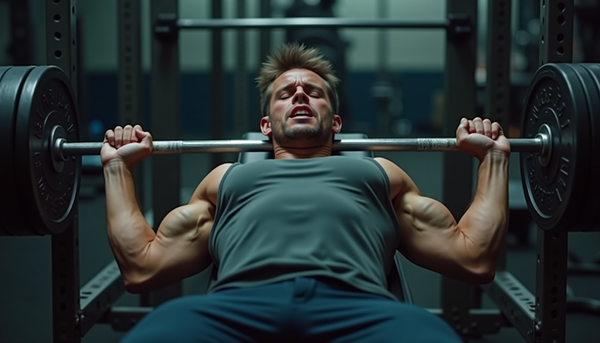Why You're Addicted to Fitness Content (And It's Killing Your Gains)

Last Tuesday, I watched a guy attempt something that looked like a cross between a Turkish get-up and interpretive dance. When he nearly dropped a 40-pound kettlebell on his head, I had to step in.
"Saw it on TikTok," he explained, slightly out of breath and definitely out of his depth.
Here's the thing—everyone's talking about how social media fitness content is dangerous because people try advanced moves too early. That's true, but it's missing the bigger picture. We're not just dealing with poor exercise selection. We're dealing with fitness ADHD.
The Real Problem Isn't What You're Doing, It's Why
Think about your last scroll through Instagram or TikTok. How many fitness videos did you watch? How many did you save with the intention of "trying later"? And how many of those saved videos are now buried in your collection, never to see the light of day?
The movement pattern approach that OPEX promotes—breaking everything down into squat, bend, lunge, push, pull, and core—is actually brilliant. But it addresses the symptom, not the disease.
The disease? We've turned fitness into Netflix. We're consuming content about working out more than we're actually working out. And just like binge-watching makes you feel productive (even though you're literally sitting still for hours), scrolling through fitness content gives you a dopamine hit that tricks your brain into thinking you've accomplished something.
Movement Patterns: Good Medicine, Wrong Dosage
Don't get me wrong—the six-pattern system works. I've used similar frameworks with clients for years. When someone can't do a proper bodyweight squat but wants to try pistol squats because they look "sick" on Instagram, you bet I'm bringing them back to goblet squats with tempo control.
But here's what the original article doesn't address: why are we so drawn to complexity in the first place?
Because simple is boring. Simple doesn't get likes. Simple doesn't make you feel special.
A goblet squat doesn't make for viral content. But you know what? Neither does brushing your teeth, and you still do that every day because the results matter more than the process being entertaining.
The Psychology Behind the Scroll
Every time you see a new exercise variation, your brain goes: "Oh, this might be THE thing that finally gets me the results I want!" It's the fitness equivalent of buying lottery tickets. You're not really investing in a system—you're hoping for magic.
This is why people have 47 different workout plans saved on their phones but can't tell you the last time they did the same routine twice in a row.
The movement pattern approach works because it forces you to get honest about where you actually are, not where you want to be. But it only works if you can resist the siren call of novelty.
My Framework: Patterns + Psychology
Here's how I actually use the six-pattern system with people who are recovering from fitness content addiction:
Phase 1: Digital Detox Assessment Before we even talk about squats, I have people unfollow every fitness influencer for 30 days. I know, it sounds extreme. But you can't build consistent habits while constantly being bombarded with "new and better" options.
Then we do the basic movement assessment. Can you squat to parallel without your knees caving? Can you hinge at the hips without rounding your back? Can you do a push-up with proper form? Most people can't, and that's perfectly fine—it just means we have a clear starting point.
Phase 2: Boring Is Beautiful For the squat pattern, we start with goblet squats. Three seconds down, pause, three seconds up. That's it. No variations, no "spicing things up," no "keeping it interesting." Just goblet squats until you can do 20 perfect reps without thinking about it.
For the bend pattern, Romanian deadlifts with a dowel rod or empty barbell. Focus on feeling the hamstrings stretch, keeping that back flat. Again, boring as hell, incredibly effective.
Lunge pattern? Stationary reverse lunges. Hold onto something if you need to. No walking lunges, no lateral lunges, no Instagram-worthy variations.
Push pattern starts with planks and push-ups from the knees if needed. Pull pattern begins with inverted rows or assisted pull-ups. Core work is planks and side planks.
That's it. Six exercises. Done consistently for 8-12 weeks.
Phase 3: Earn Your Complexity Only after someone can demonstrate complete competence in the basics do we add variations. And I mean complete competence—not "good enough" or "I think I've got it."
This is where most people struggle, because it's not sexy. There's no story to tell your friends, no impressive video to post. Just steady, unglamorous progress.
The Truth About Fundamentals
Here's something the fitness industry doesn't want you to know: the basics work so well that most people never need to progress beyond them. I have clients who've been doing variations of the same six movements for two years and are in the best shape of their lives.
The guy who almost clocked himself with the kettlebell? He's been doing goblet squats and getting stronger every week. No torn ACLs, no shoulder impingements, no dramatic stories. Just results.
Breaking the Content Addiction Cycle
If you recognize yourself in this pattern-hopping behavior, here's your intervention:
- Audit your follows: Unfollow anyone whose primary content is exercise demonstrations. Keep people who talk about consistency, mindset, and long-term thinking.
- Choose your six: Pick one exercise from each movement pattern. Write them down. These are your movements for the next 90 days.
- Track boring metrics: Don't track how many new exercises you learned. Track how many workouts you completed, how your form improved, how the weights increased.
- Embrace the plateau: When goblet squats start feeling easy, that's not your cue to find something harder. That's your cue to add weight, slow down the tempo, or increase reps.
The Real Secret Sauce
The movement pattern approach isn't revolutionary because it's complex—it's revolutionary because it's simple. It takes the infinite universe of exercise options and gives you six buckets. That's it.
But it only works if you can resist the urge to constantly reorganize those buckets.
Your workout doesn't need to be entertaining. Your workout needs to be effective. And effectiveness comes from doing the right things consistently, not from doing interesting things occasionally.
The next time you see someone doing a single-arm overhead squat while balancing on a BOSU ball, remember: they might have more followers than you, but that doesn't mean they have better results.
Stick to your six patterns. Master the basics. Be the person who shows up and does the work, even when—especially when—it's boring.
Because in a world obsessed with viral fitness content, consistency is the most radical thing you can do.




